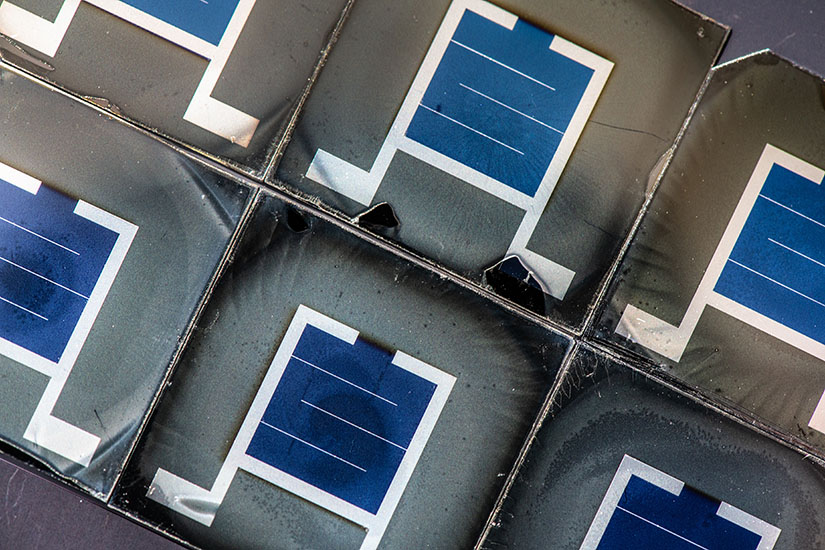Techno-economic analyzes conducted by NREL researchers have shown how perovskite-silicon tandem solar panels are currently barely cost-competitive with existing PV panels. Manufacturing costs for U.S.-made tandem products were found to range between $0.29/W and $0.42/W, with module efficiencies ranging from 25% to 30%.
Photovoltaic modules based on perovskite-silicon tandem solar cells could be produced in the United States at a minimum sustainable price of $0.35/W, according to a techno-economic analysis conducted by researchers at the National Renewable Energy Laboratory (NREL). US Department of Energy. .
“Our work is based on data we collected over the past year from equipment manufacturers and material suppliers,” said the study’s lead author, Jacob J. Cordell. pv magazine. “We assumed that the modules would have an efficiency of 25% to 35%.”
The data was processed via the detailed cost analysis model DCAM, an open-access tool that NREL developed itself
building cost models for PV components and systems. The levelized energy cost (LCOE) calculation assumed tandem efficiencies up to 35%, lifetimes ranging from 10 to 30 years and GW-sized factories.
The researchers provided a detailed techno-economic analysis of both two-terminal (2T) and four-terminal (4T) solar cell architectures and said that despite their potential multiple design configurations, they face similar manufacturing costs. However, the 4T designs may be preferred in the future because the 2T configuration precludes the use of back-contact (BC) devices for the lower cells. On the other hand, high-efficiency technologies such as BC and heterojunction (HJT) could be preferred for tandem modules, which are mainly designed to maximize efficiency and power generation. However, their analysis also included PERC and TOPCon technologies.
The research team found that, without the policy incentives of the Inflation Reduction Act (IRA), 25% efficient perovskite silicon solar panels could currently be produced in the United States for $0.359/W for 4T designs and $0.364/W for 2T architectures . . It also found that, at 30% efficiency, 4T panels can be manufactured for $0.299/W and 2T modules for $0.303/W.
“At a module efficiency of 32.5%, the 4T cost falls below our modeled cost for a 22% efficient PERC Si module cost, $0.285/W,” it further explained, noting that, with an efficiency of 35%, the cost would be between $0.257. /W and $0.306/W.
Solar glass, backplates, encapsulation and electron transport layer (ETL) precursors in the perovskite subcell are responsible for the higher cost of the tandem modules compared to single-junction products, due to the materials and equipment required, according to the scientists.
The academics believe that these costs could be further reduced in the near future, as they expect silicon cell costs to fall further, while perovskite precursors and processing equipment could become more industrially standard.
However, according to Cordell, perovskite-silicon tandem modules cannot be brought to market until they have a proven track record of performance. “We have seen recent perovskite-based PV facilities come online in China and as data from these facilities becomes available we could have interesting information on degradation over time,” he said. “A two-year testing period combined with accelerated testing can help this technology get closer to the market.”
Cordell also said it’s difficult to evaluate how much data is needed. “Of course, selling a product does not necessarily increase market share,” he said. “It may take longer than expected to achieve this goal as other degradation mechanisms may emerge, as we are now seeing with TOPCon modules in the field.
The NREL scientists added that even given the cost of silicon PV production in China, tandem modules may find it difficult to compete with single-junction counterparts, as commercially available TOPCon, BC and HJT cell efficiencies continue to increase and costs continue to decrease. “However, our assumptions were based on some type of production equipment that does not yet exist,” he said. “If the costs of the tandem modules are high now, this does not mean that this will still be the case in two years’ time. A larger perovskite industry can help change this picture.”
Cordell also emphasized that tandem modules will also provide an advantage in terms of efficiency per area. “It’s not just about cost per watt,” he says. “Reduced costs that you do not have to buy or lease if you also take into account more land. This technology will, at least initially, mainly be developed with large-scale projects.”
The research work was presented in “Techno-economic analysis of perovskite/silicon tandem solar panels”, published in Joule.
This content is copyrighted and may not be reused. If you would like to collaborate with us and reuse some of our content, please contact: editors@pv-magazine.com.

